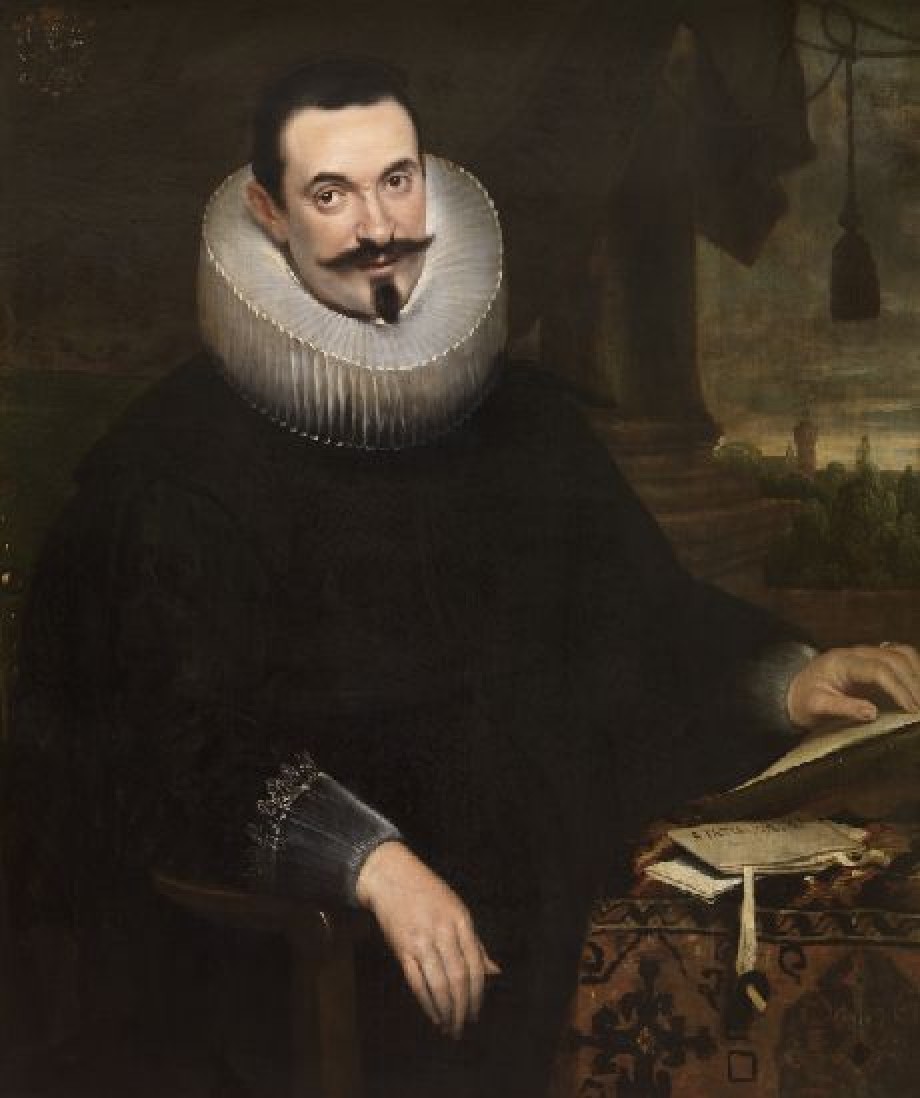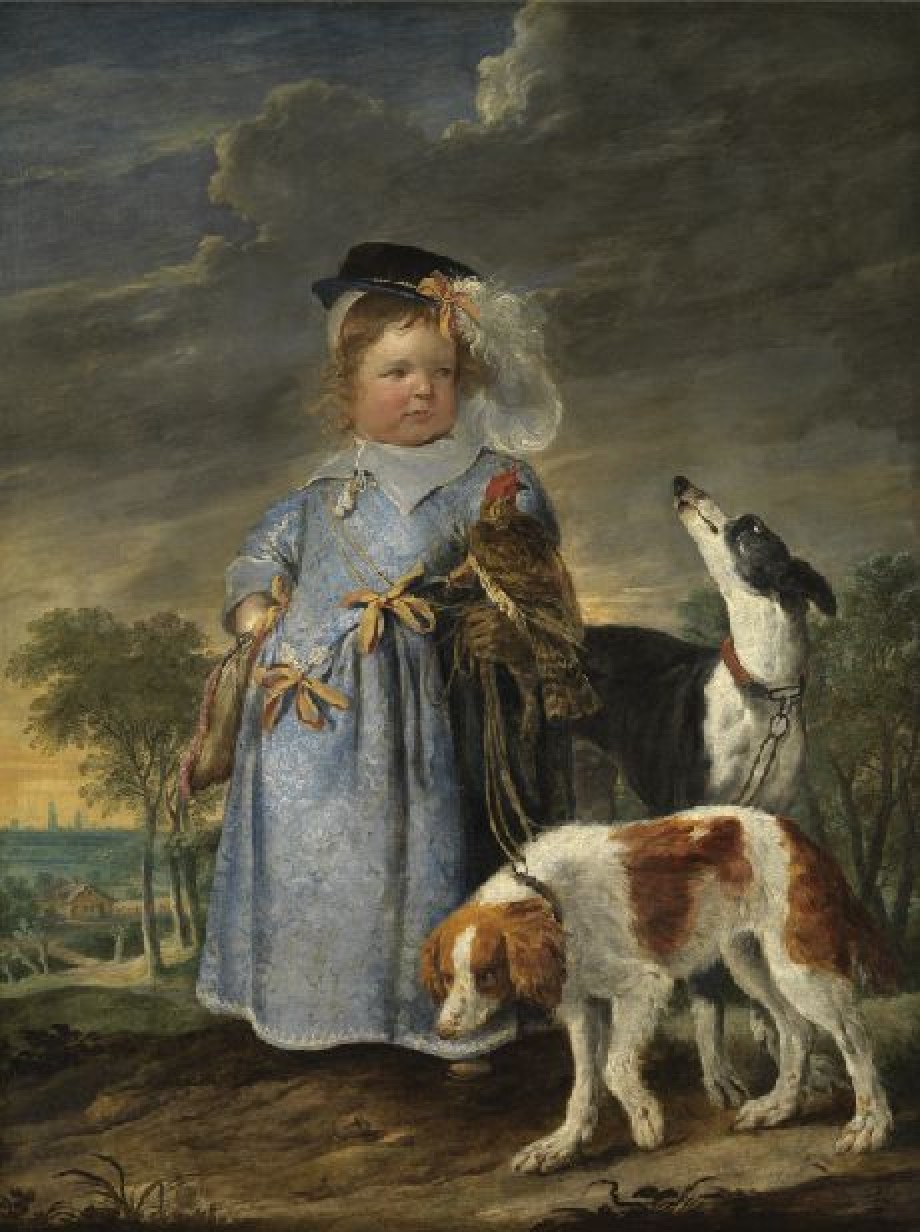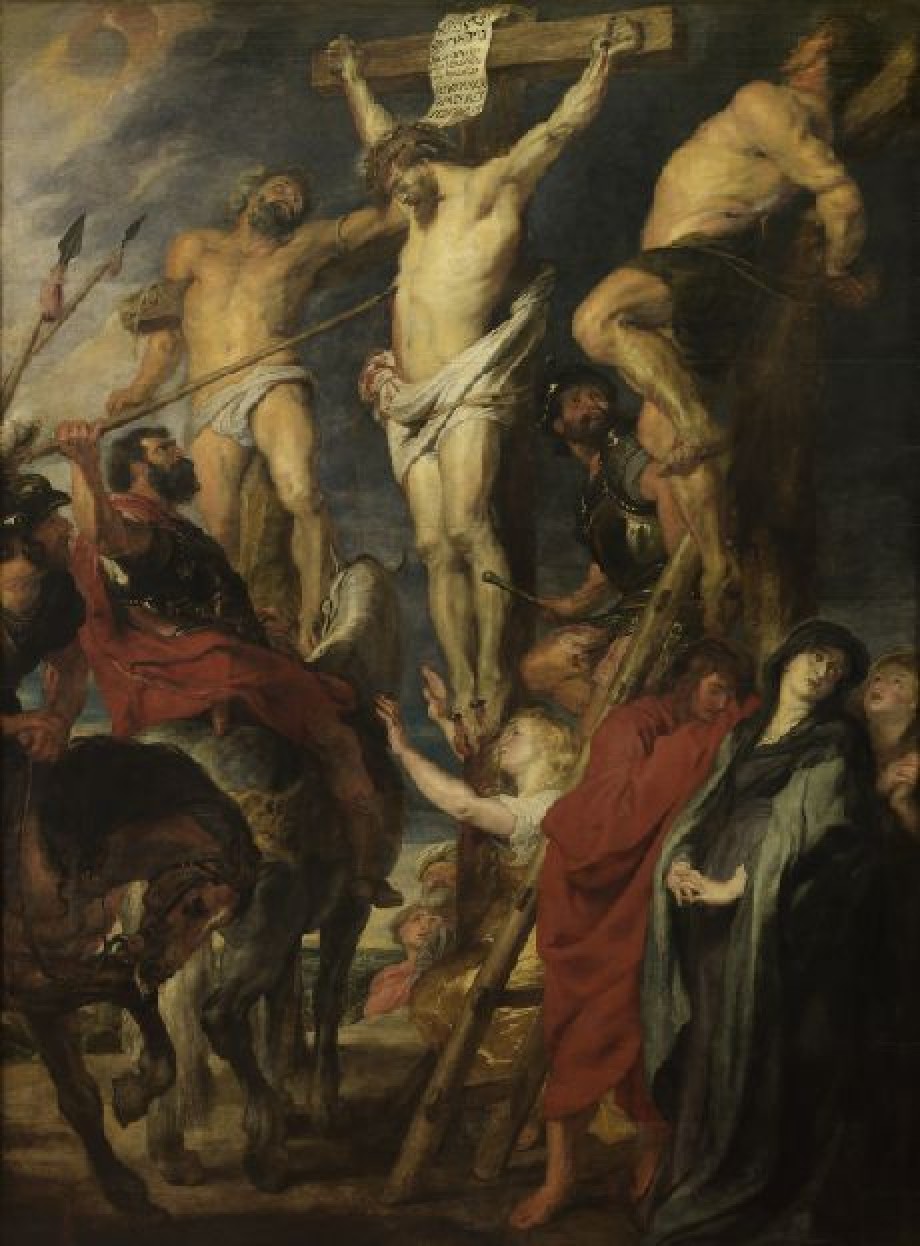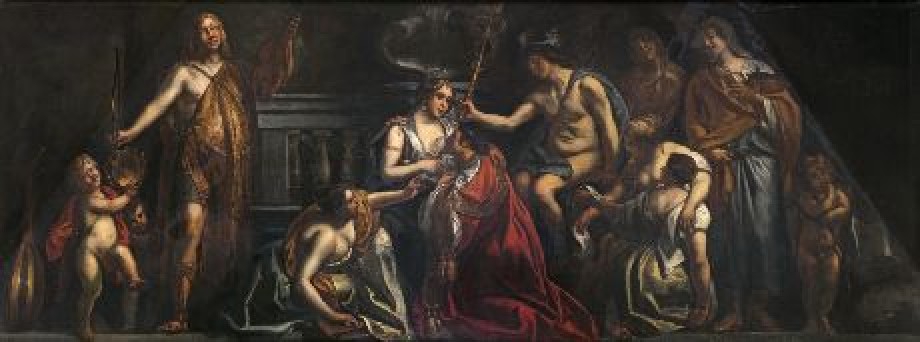Scaldis and Antverpia

Artist / maker
Abraham Janssens I (painter)Date
(1609)Period
17 centuryCollection
Royal Museum of Fine Arts Antwerp
Scaldis is leaning on a huge amphora from which water from the river Scheldt is streaming. The muscular river god is proffering the city maiden a horn with an abundance of vegetables and fruit that are grown on his banks. The crops are in the form of a face, which may be a visual effect in the tradition of the…
Read more
Scaldis is leaning on a huge amphora from which water from the river Scheldt is streaming. The muscular river god is proffering the city maiden a horn with an abundance of vegetables and fruit that are grown on his banks. The crops are in the form of a face, which may be a visual effect in the tradition of the Italian painter Arcimboldo. Antverpia does not appear to be interested in the agricultural produce, for she is pointing emphatically at the Scheldt water.
The Antwerp city authorities commissioned this allegory in 1608 for the chimneybreast of the States Chamber in the City Hall. It was on 9 April 1609 that the terms of the Twelve Years’ Truce were signed, the ceasefire between Spain and the Dutch Republic. Nowadays marriages are solemnised there. A painting of 1856 by the 19th-century artist Jan Geeraerts (St Petersburg, Hermitage, inv. no. ГЭ-7533) is a record of how Scaldis and Antverpia was originally installed in the room. The negotiators wanted to urge the city authorities to reopen the river to shipping, for free passage was (and is) essential for Antwerp’s prosperity. The prestigious commission was awarded to Abraham Janssens, one of the city’s leading artists. He based his composition on Michelangelo’s famous Creation of Adam. The figures are robust, and the bright light casts dark shadows, as it does in Caravaggio’s masterpieces. The scale in impressive. Janssens was paid 750 guilders for the picture.
Another masterpiece hung facing Janssens’s panel, the equally monumental Adoration of the Magi of 1609 (Madrid, Museo del Prado, inv. no. P001638), with which Peter Paul Rubens fired the starting shot in a career that would have an unparalleled impact on the artistic life of the city on the Scheldt.
Read less











